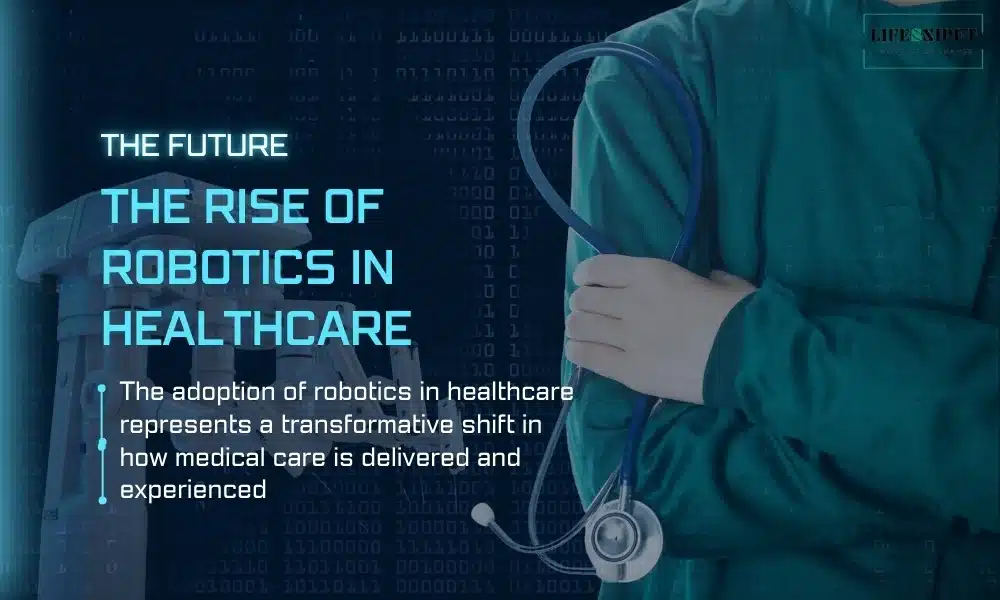As the world continues to embrace digital transformation, the healthcare industry has not been left behind. The use of technology has revolutionized the way medical records are managed, with the introduction of Electronic Health Records (EHR) and Electronic Medical Records (EMR) systems. These systems have significantly improved patient care, streamlined administrative tasks, and enhanced overall efficiency within healthcare practices. In this article, I will provide a comprehensive overview of EHR Vs EMR systems, their features, and benefits, as well as the development costs associated with implementing them.
What is an Electronic Health Record (EHR), and how does it work?
An Electronic Health Record (EHR) is a digital version of a patient’s medical history, which includes information such as diagnoses, medications, allergies, lab results, and treatment plans. Unlike traditional paper-based records, EHRs are stored and accessed electronically, making them easily available to authorized healthcare providers. EHR systems are designed to be interoperable, meaning they can exchange information with other healthcare systems, ensuring seamless communication and continuity of care across different healthcare settings.
One of the key features of EHR systems is their ability to provide a complete and up-to-date picture of a patient’s health. This comprehensive view allows healthcare providers to make more informed decisions, improve patient outcomes, and reduce medical errors. EHRs also support decision-making through features such as clinical decision support, which provides alerts and reminders for preventive care and potential drug interactions. Additionally, EHRs enable secure sharing of patient information between healthcare providers, facilitating better coordination and collaboration in patient care.
What are the Advantages of adopting Electronic Health Record (EHR) systems?
Adopting EHR systems offers numerous advantages for healthcare practices. Firstly, EHRs improve the accuracy and accessibility of patient information. With EHRs, healthcare providers can easily access and update patient records, reducing the risk of errors associated with manual data entry. This accessibility also enhances patient care by providing healthcare professionals with real-time information, allowing for quicker diagnosis and treatment decisions.
Secondly, EHR systems improve the efficiency and productivity of healthcare practices. Tasks such as scheduling appointments, managing prescriptions, and billing can be automated, reducing administrative burdens and freeing up time for healthcare providers to focus on patient care. EHRs also streamline workflows by eliminating the need for paper records and manual filing systems, leading to cost savings and a more environmentally friendly approach.
Lastly, adopting EHR systems promotes better patient engagement and satisfaction. EHRs often include patient portals, allowing patients to access their health information, schedule appointments, and communicate with their healthcare providers. This transparency and involvement in their care empower patients and contribute to better health outcomes.
Challenges in Developing and Implementing (Electronic Health Record) EHR System
While EHR systems offer significant benefits, their development and implementation can present challenges for healthcare practices. One of the main challenges is the cost associated with adopting EHR systems. The initial investment in hardware, software, and training can be substantial, especially for smaller practices. Additionally, there may be ongoing maintenance and support costs that need to be considered.
Another challenge is the learning curve associated with transitioning from paper-based records to EHR systems. Healthcare providers and staff members may require training and time to adapt to the new system, which can temporarily impact productivity. Healthcare practices must allocate sufficient resources and plan for a smooth transition to minimize disruptions in patient care.
Data security and privacy are also significant concerns when developing and implementing EHR systems. Healthcare practices need to ensure that patient information is protected from unauthorized access and breaches. This includes implementing secure access controls, encryption, and regular system audits to identify and address vulnerabilities. Compliance with data protection regulations, such as HIPAA in the United States, is essential to maintain patient trust and adhere to legal requirements.
What is electronic medical record (EMR) and its role in healthcare?
Electronic Medical Records (EMR) are similar to EHRs in that they are digital versions of patient records. However, EMRs primarily focus on the medical and treatment history of individual patients within a specific healthcare organization or practice. Unlike EHRs, EMRs may not be easily shareable between healthcare settings or providers. The information contained in EMRs is typically used by healthcare professionals within a specific practice to document patient encounters, manage prescriptions, and track treatments.
EMR systems play a crucial role in improving the efficiency and quality of care within healthcare practices. By digitizing patient records, EMRs eliminate the need for manual record-keeping and paper-based forms, reducing the risk of errors and improving data accuracy. EMRs also enable healthcare providers to easily access patient information, track medication histories, and monitor treatment progress. This accessibility and real-time information contribute to better decision-making and improved patient outcomes.
What are the Benefits of using electronic medical record (EMR) software in Your Practice?
Implementing electronic medical record (EMR) software in your practice offers several benefits. Firstly, EMRs improve the organization and accessibility of patient information. By digitizing records, healthcare providers can easily search for and retrieve patient data, reducing the time spent on manual record retrieval. This efficiency translates into improved patient care, as healthcare professionals can quickly access relevant information during patient encounters.
Secondly, EMR software enhances medication management and reduces the risk of adverse drug events. EMRs provide functionalities such as electronic prescribing, which allows healthcare providers to send prescriptions directly to pharmacies, minimizing errors associated with handwritten prescriptions. EMRs also include drug interaction alerts and allergy notifications, providing healthcare professionals with real-time information to ensure patient safety.
Furthermore, EMR systems support clinical documentation and quality reporting. Through templates and standardized forms, healthcare providers can efficiently document patient encounters, ensuring accurate and complete medical records. EMRs also facilitate quality reporting by generating reports on key performance indicators, allowing healthcare practices to assess their performance and identify areas for improvement.
Why Choose electronic medical records (EMR) Over paper-based records?
EMRs offer many advantages over paper records in terms of ease of use and improved patient care, from easier data storage and access to seamless collaboration across systems such as billing, scheduling appointments, and tracking outcomes.
Software development companies in the USA utilizing EMRs provide healthcare practitioners and facilities with an easier and quicker method for reviewing patient histories than searching through multiple paper records. All patient information stored can easily be accessed by authorized personnel for review, making EMRs the ideal way to store this important data securely in one central repository.
EMR systems make it easy for healthcare providers to share data among team members for improved communication and collaboration. Creating detailed reports about patient treatments and outcomes can inform research as well as public health decisions.
EMRs offer several distinct advantages over paper records, including increased efficiency and data security improvements, reduced costs, enhanced patient care services, superior reporting capabilities, and easier accessibility of patient information.
Healthcare providers strive to enhance patient satisfaction and offer high-quality services. Electronic records have become more vital than ever for improving satisfaction levels and providing exceptional care. EHR vs EMR providers utilizing their power ensure patients can access accurate and up-to-date information crucial for providing excellent treatment plans.
EHR Vs EMR: What are the Key Differences?
Electronic Health Records (EHRs) and Electronic Medical Records (EMRs) are two forms of digital records used to store patient health information digitally. Although both EHRs and EMRs share similar functions, there are distinct differences between EHR and EMR that must be kept in mind when choosing which system will meet your individual needs best.
| On Basis of | Electronic Health Records (EHR) | Electronic Medical Records (EMR) |
| Compare Digital Healthcare Records or Medical Charts | EHRs collect information on patients over time and across medical practices. Due to its abundance of data and information provided, an EHR may more closely resemble “healthcare records”. | EMRs resemble traditional medical charts because they only contain patient data collected at one physician’s office – this means it contain demographic, diagnosis, and prescription details from only this particular location. |
| Analysis of entire health history or clinical diagnosis and treatment plans | EHR systems aim to give healthcare practitioners a comprehensive picture of a person’s overall healthcare history across their lifetime and the healthcare system as a whole, reporting on various kinds of data related to each person instantaneously. However, this information will likely remain less specific than other resources when diagnosing and treating specific diagnoses/treatable plans are considered. | EMR systems have a limited scope. Their primary function is to report internal clinical information specific to one practice. Rather than providing comprehensive healthcare reports. Thus making EMR ideal for diagnosing specific diagnoses or treatments as opposed to understanding a full picture of patient health history. |
| Travel across providers or remaining within one practice’s system | EHRs are designed to work across healthcare providers. When patients start seeing new physicians or medical providers, those new providers can access all the data collected at other healthcare facilities relating to that patient within seconds – for instance, if someone received test results three years prior, their current provider can access those results immediately from an outside lab. | EMR systems, on the other hand, are intended to serve a limited purpose within clinical environments. Providing records on patient histories within that same setting rather than sharing outside it. Physicians will have access to patient visits within that medical office but cannot easily gain access to external data obtained at other facilities. |
| Decision-Making Tools Versus Diagnosis or Treatment Alone | EHRs typically feature decision-making tools designed for healthcare providers based on data collected during a patient’s health history, helping healthcare systems predict, develop, and measure treatment plans in the future. This tool draws its insights from past treatment at other healthcare facilities over time. | EMR will give clinicians data regarding a patient’s diagnosis and treatment within their facility. For example, charts with previous prescriptions and lab test results related to what diagnosis the individual being treated at their facility currently might also be included within an EMR system. |
| Ideal for multi-specialty organizations or specialty clinics | Hospitals utilizing EHR may rely on it during an emergency to quickly access patient medical histories and develop treatment plans as quickly as possible for urgent issues. | On the contrary, small clinical offices like chiropractors may use EMR to gain better insights into patients’ back issues and create effective treatment plans. EHR may prove more relevant; its abundance of data provides no tangible benefit in chiropractic care. |
EHR Vs EMR: Functionalities Comparison and Development Cost Differences
When considering the functionalities of EHR Vs EMR systems, it is essential to assess the specific needs of your healthcare practice. EHR systems generally offer a broader range of functionalities, including comprehensive patient records, interoperability, clinical decision support, and population health management capabilities. These functionalities support better care coordination, data-driven decision-making, and improved patient outcomes.
EMR systems, while more limited in scope, still offer essential functionalities such as patient record management, e-prescribing, and clinical documentation. These functionalities cater to the specific needs of individual healthcare practices and may be more cost-effective for smaller organizations or practices with less complex workflows.
In terms of development costs, EHR systems usually require a larger investment due to their broader functionalities and interoperability requirements. The development costs of an EHR system can vary depending on factors such as the size of the practice, the level of customization required, and the integration with other healthcare systems. On the other hand, developing an EMR system may involve lower upfront costs but may still require investment in hardware, software, training, and ongoing maintenance.
EHR vs EMR: Factors to consider when choosing between EHR and EMR for Your Practice
When choosing between EHR Vs EMR systems for your practice, there are several factors to consider. Firstly, assess the specific needs and workflows of your healthcare practice. Consider the level of interoperability required, the scope of patient information needed, and the functionalities that would best support your practice’s goals and objectives.
Secondly, consider the size and resources of your practice. EHR systems often require more significant investments in terms of infrastructure, training, and ongoing support. Smaller practices may find that EMR systems meet their needs at a more cost-effective level, while larger practices with more complex workflows may benefit from the broader functionalities of EHR systems.
Another crucial factor to consider is the support and training provided by the software solution provider. Ensure that the provider offers comprehensive training programs and ongoing support to facilitate a smooth transition and maximize the benefits of the chosen system. Evaluate the provider’s track record and reputation within the healthcare industry to ensure their reliability and commitment to customer satisfaction.
What are the Common Concerns in EHR vs EMR Selection?
When selecting EHR Vs EMR systems, there are common concerns that healthcare practices should address. Two significant concerns are data security and privacy, as well as cost considerations.
- a) Data Security and Privacy in EHR and EMR Systems: Healthcare practices must ensure that patient information is protected from unauthorized access and breaches. Look for software solution providers that prioritize data security and have robust measures in place, such as secure access controls, encryption, and regular system audits. Compliance with data protection regulations, such as HIPAA, is essential to maintain patient trust and meet legal requirements.
- b) Cost Considerations for EHR and EMR Adoption: The cost of implementing and maintaining EHR and EMR systems can vary significantly. Consider the upfront costs, ongoing maintenance, and support expenses when evaluating different software solution providers. It is essential to strike a balance between cost and functionality, ensuring that the chosen system meets your practice’s needs and budget.
How to choose the Best Healthcare Software Solution Provider for EHR and EMR Development?
Selecting an EHR Vs EMR software provider can be a daunting task, involving factors like experience, scalability, affordability, and service quality to consider when making this selection decision.
1. Experience
When selecting a provider to develop healthcare software solutions, experience is of utmost importance. It ensures they have worked on projects similar to your own in the past and understand any technical challenges that might present themselves during development.
2. Scalability
When searching for healthcare software solution providers, it’s essential that their solutions can easily adjust according to the size requirements of your practice. This way, it avoids expensive expansion costs in the future.
3. Affordable Healthcare Software Solutions
When selecting healthcare software providers, cost should always play an integral part. Finding an economical yet manageable long-term solution is key.
4. Quality of Service
An outstanding healthcare software solution provider should offer outstanding customer service. They should offer timely assistance and take proactive measures to address any potential problems that might arise.
Before making your selection of healthcare software solution providers, you must conduct extensive research. Please make sure they possess the experience, scalability, affordability, and quality service you are after, as well as customer reviews/case studies from other users to gain more insight. Doing this can assist healthcare software development companies in the USA with making an informed decision when selecting providers for EHR/EMR development requirements.
Conclusion
The adoption of Electronic Health Record (EHR) and Electronic Medical Record (EMR) systems has transformed the healthcare industry, improving patient care, streamlining administrative tasks, and enhancing overall efficiency within healthcare practices. While EHR systems offer a comprehensive view of a patient’s health and support interoperability, EMR systems cater to the specific needs of individual practices. The choice between EHR and EMR depends on factors such as practice size, workflows, and budget.
When selecting a healthcare software solution provider for EHR Vs EMR development, consider factors such as experience, reputation, customer reviews, support, and commitment to innovation. By carefully evaluating these factors, healthcare practices can choose the best provider to meet their specific needs and ensure the successful implementation and adoption of EHR or EMR systems.
FAQs
Q1: What is the difference between EHR and EMR?
A1: The main difference between EHR and EMR lies in the scope of information captured and the level of interoperability. EHRs encompass a patient’s complete health history and support interoperability with other healthcare systems, allowing for a comprehensive view of the patient’s health. EMRs focus on patient records within a specific healthcare organization or practice and may not be easily shared with external providers.
Q2: How much does it cost to develop an EHR or EMR system?
A2: The development costs of an EHR or EMR system can vary depending on factors such as the size of the practice, the level of customization required, and the integration with other healthcare systems. EHR systems generally require a larger investment due to their broader functionalities and interoperability requirements. EMR systems may involve lower upfront costs but may still require investment in hardware, software, training, and ongoing maintenance.

Welcome to LifeSnipet! At LifeSnipet, we’re your ultimate source for the latest health updates. Specializing in health and fitness-related diseases, we delve deep into Ayurvedic techniques, providing you with a comprehensive understanding of well-being. Explore our real-time updates, detailed articles, and ancient Ayurvedic wisdom for a holistic approach to health. Embark on a journey to a healthier, vibrant life with LifeSnipet – where your well-being is our priority!











